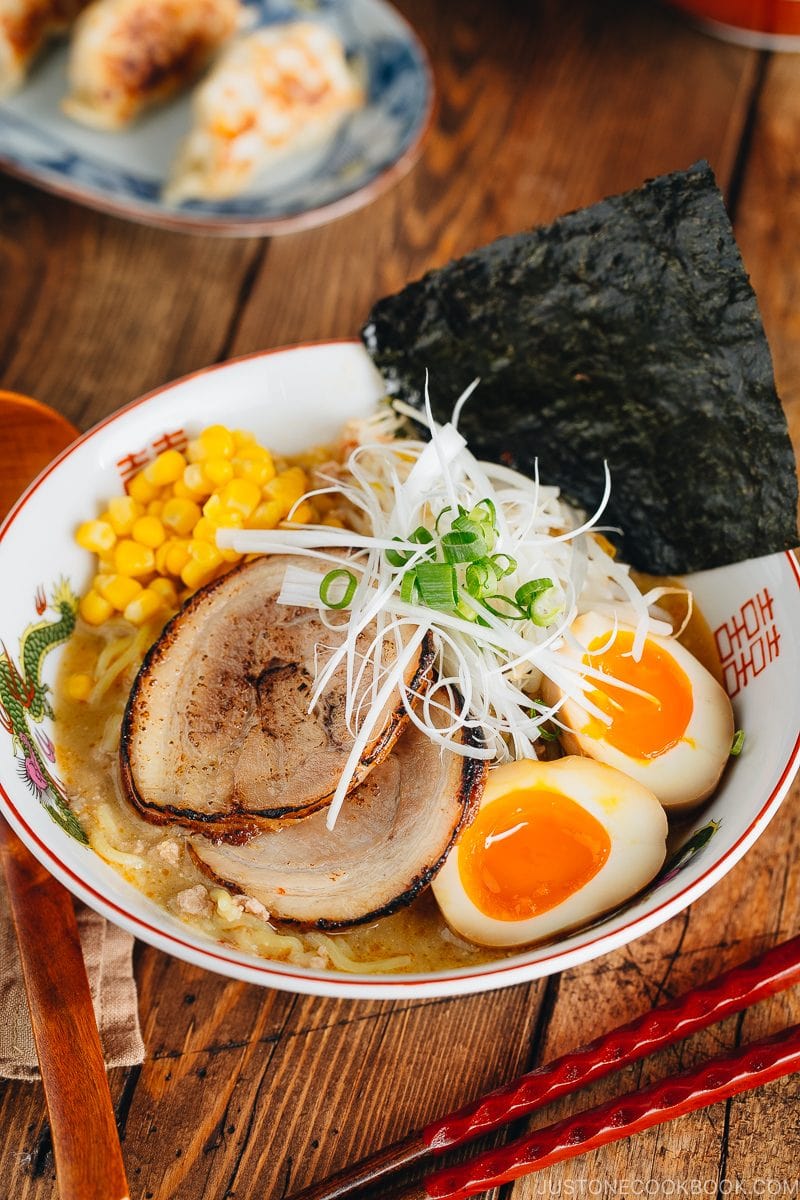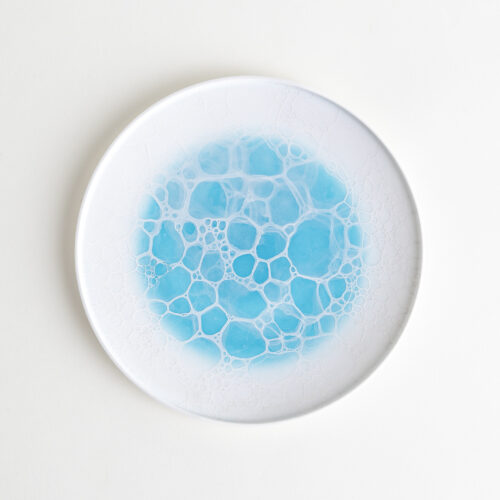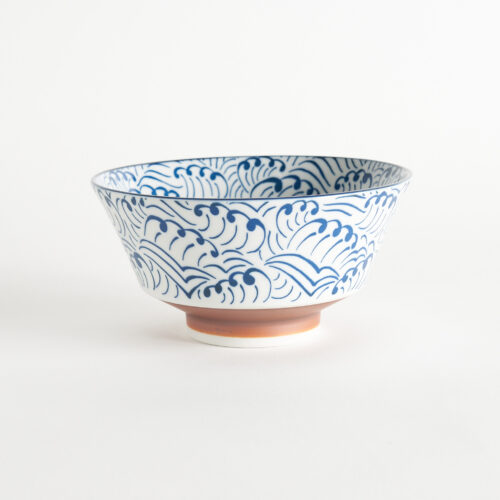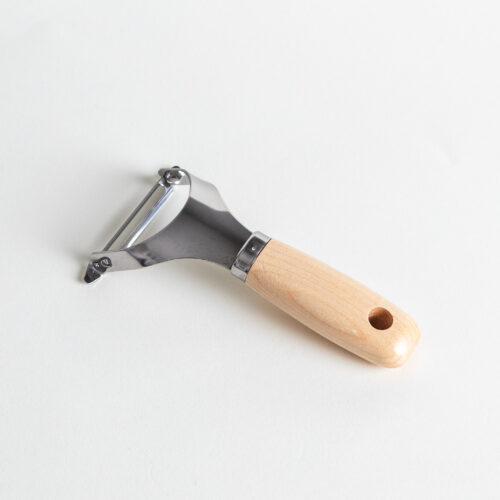Miso has a long shelf life, but it can spoil sooner if not handled and stored properly. In this post, I’ll teach you my best storage tips for this Japanese fermented soybean paste and how to tell when it’s time to buy a fresh batch.
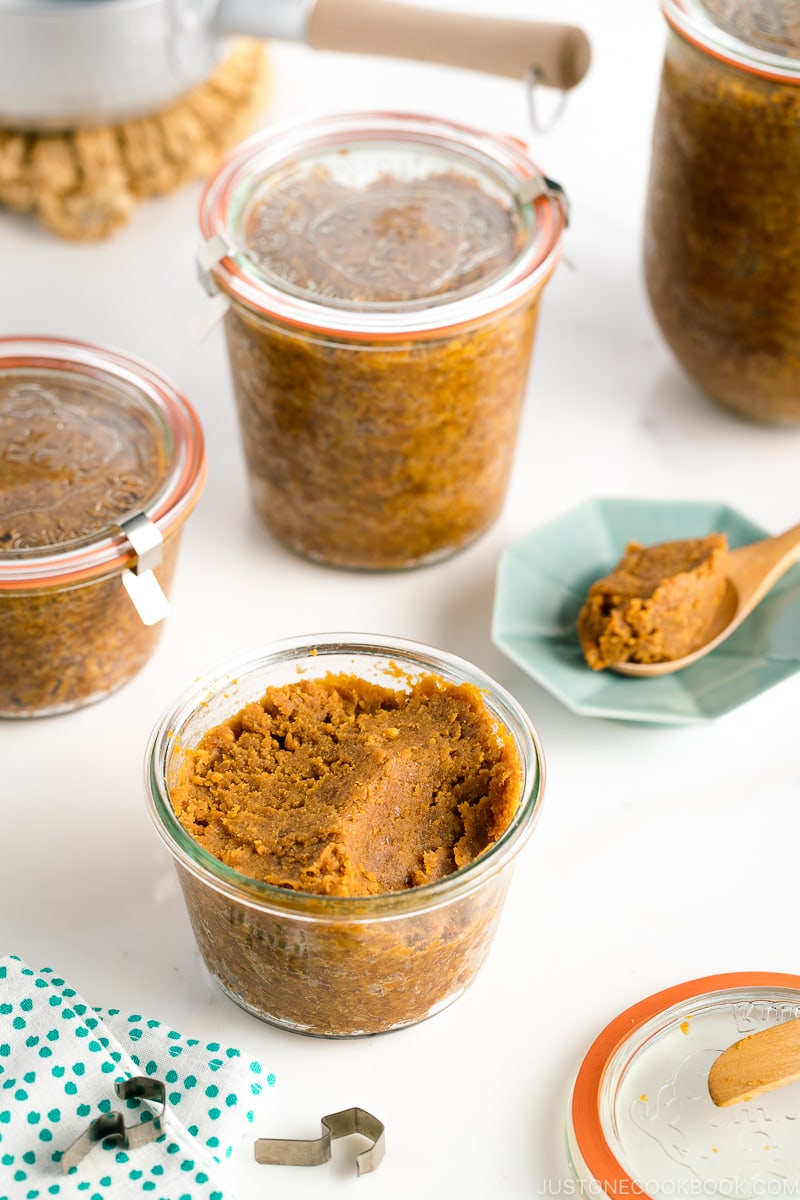
My readers often ask me, “Does miso go bad?” Not exactly! This Japanese superfood that we use to make Homemade Miso Soup has a long shelf life, and it can last for a very long time if stored properly.
However, its quality and flavor will degrade over time, and it can spoil sooner if not stored the right way. In this post, I’ll teach you the best way to handle and keep this condiment, how it changes over time, and how to detect spoilage.
For a deeper dive into this traditional Japanese ingredient, explore the different varieties on my Miso pantry page, learn about The Health Benefits of Miso, and discover The Enduring History of Miso.
Table of Contents
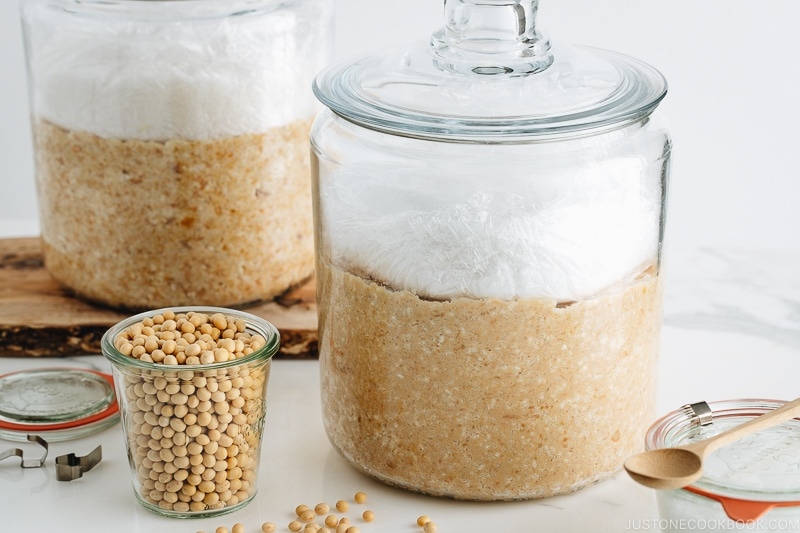
What is Miso?
Miso (味噌) is a Japanese fermented soybean paste made from soybeans, salt, and koji culture (麹, a fermentation starter, also known as aspergillus oryzae). It often incorporates grains like steamed rice or barley. The mixture is left to age in cedar-wood kegs at ambient temperature in a dark place for six months to five years. The result is a salty, slightly sweet, and earthy paste with a complex umami flavor that can only come from nature and time.

How Long Does Miso Keep?
With any overall salt content of 10 percent, it’s no wonder that this fermented paste keeps for a very long time. In fact, the Japanese have used it since ancient times as a preservative in foods like Japanese miso pickles (misozuke).
Because of its high salt factor, miso paste generally doesn’t go bad if you handle and store it properly. If kept in ideal conditions, it can stay a consistent quality for 1 to 3 years.
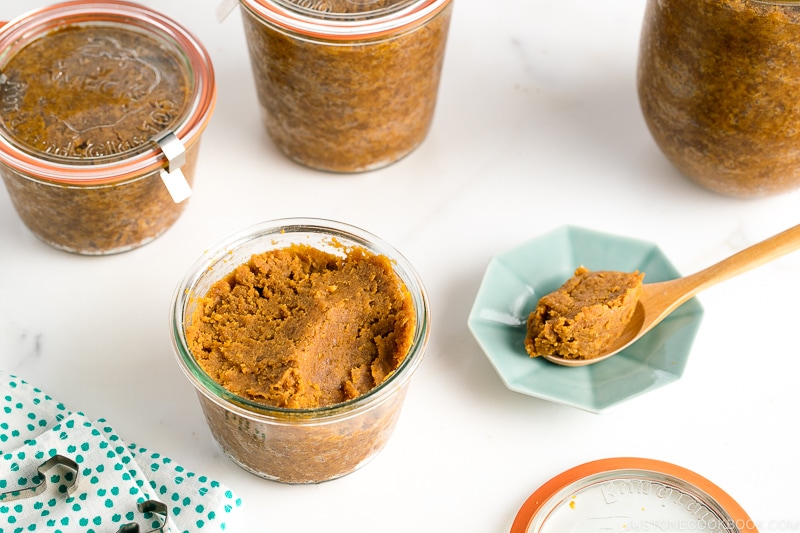
How to Store Miso
To preserve the quality of your miso and extend its longevity, I suggest following these basic handling and storage steps:
- Use clean utensils. I always scoop out the paste with a clean and dry utensil. This will help prevent cross-contamination and mold growth.
- Cover with plastic wrap. Flatten the surface with a clean utensil. Then, place a piece plastic wrap directly and snugly onto the exposed surface. This provides added protection against oxidation that causes drying and discoloration from exposure to air. (You can discard the white sheet that comes with the new tub.)
- Seal with a lid. After covering the surface with plastic wrap, seal the package with a lid. If your miso comes in a pouch or bag, store the bag in a sterilized container.
- Refrigerate it (recommended). This fermented paste keeps best under a constant, low temperature. In general, I recommend storing it in the fridge to slow the fermentation process and reduce the potential for mold growth. However, please check the label for storage instructions.
- Freeze it (optional). Transfer it to a clean freezer bag, remove all the air, and seal it well. Then, store it in the freezer for up to a few months at no lower than 25ºF (-5ºC). Due to its high salt content, this paste will not completely harden when frozen. Use a clean utensil to take out the amount you want to use each time.
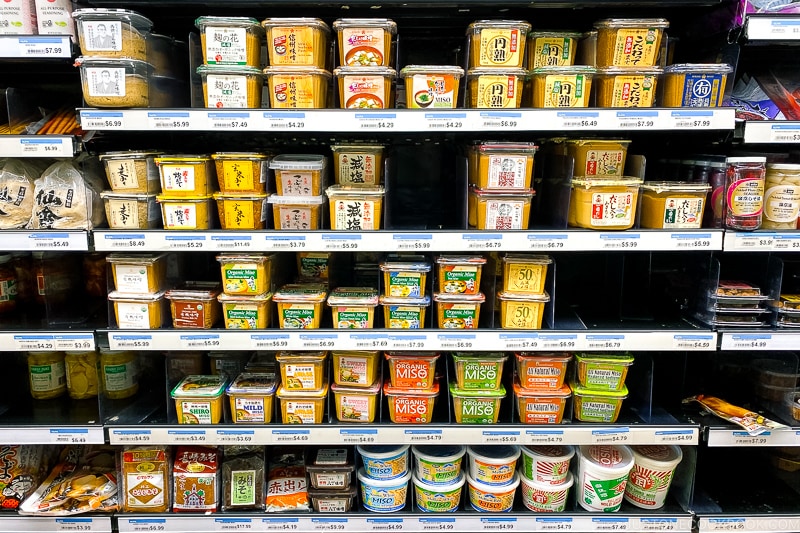
How to Tell if Miso is Going Bad
As a live food, miso continues to ferment and change. Here, I list the three main signs of spoilage to check:
- The miso is growing mold. If you detect mold, you may have stored the paste in a warm, humid environment or cross-contaminated it. Mold can be quite normal while making miso since it’s a live food, but it can also indicate spoilage. Use a clean utensil to gently scrape off the moldy parts completely and discard. Next, check the aroma and taste using my tips below. If it’s fine, then transfer it to a different sterilized container and store in the refrigerator.
- The miso smells sour. Miso that’s past its prime will develop a distinctly sour odor similar to vinegar or ammonia. This happens when the continuing fermentation converts the miso’s sweetness to sourness. If you notice a stronger and sharper smell than when it was fresh, I recommend discarding it and buying a new batch.
- It tastes sour. After the smell test, I also suggest that you taste it to confirm that it has soured. It will not be sweet anymore and will have a distinct vinegary flavor. If so, please toss it.
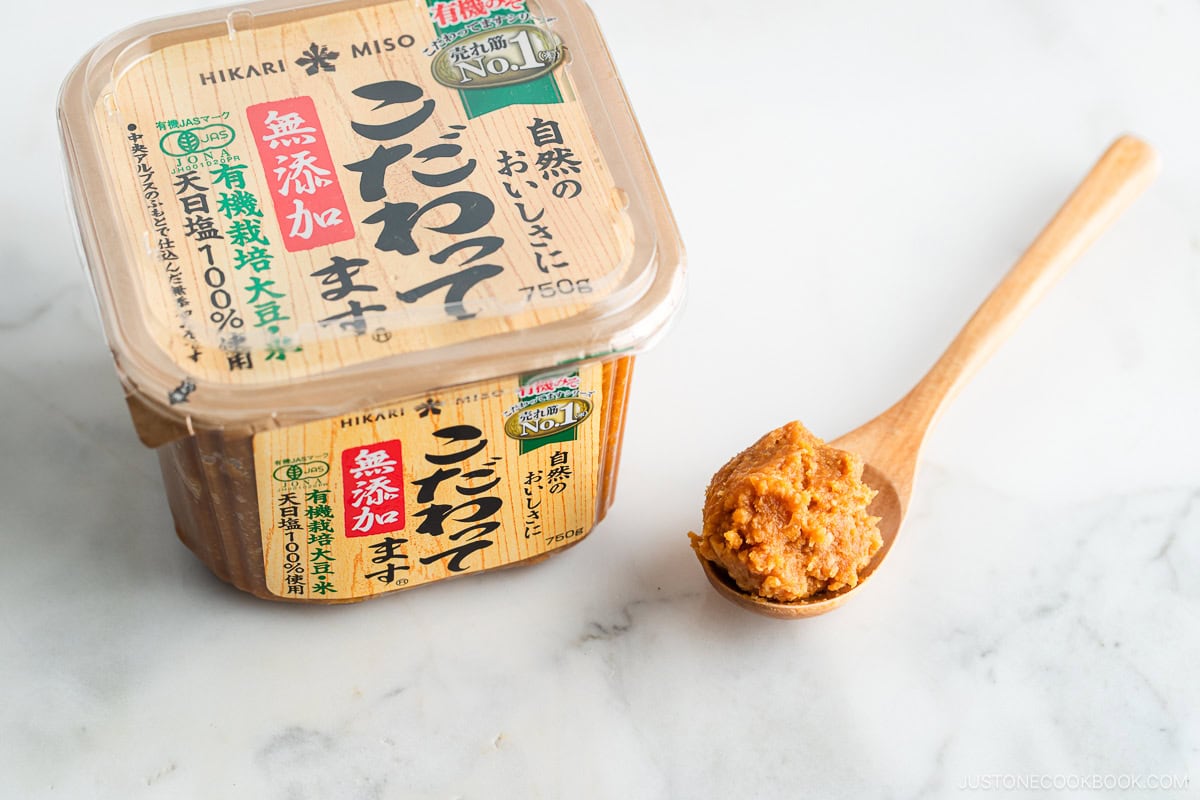
Other Changes and What They Mean
- The color gets darker. It’s normal for miso to darken due to air exposure, especially in warm climates. As a live food, it continues to slowly ferment and brown from the Maillard reaction between the sugars and amino acids. While the browning process doesn’t make it unsafe to eat, it does cause the taste to change. I recommend that you note the color when its fresh and observe it over time for darkening, which may indicate that it is degrading.
- It looks dull and changes texture. Fresh miso looks glossy and shiny. If it starts to look dull, dry, and dense, it’s likely past its prime. In this case, I recommend discarding it and buying a new package.
- Liquid forms on the surface. As miso ages, it converts to umami extract called tamari. When this happens, you may see a liquid similar to soy sauce form on its surface. There is no problem with safety, though. Simply stir this liquid back into the paste and use it normally.
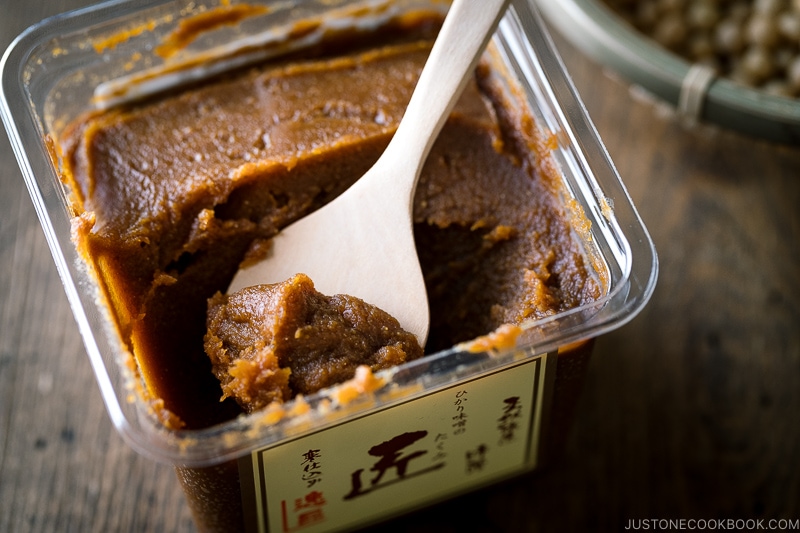
Consume Sooner for Best Quality
Miso is a complex mixture of umami flavor, and its taste depends largely on the type of koji—rice, barley, or soybean—used to make it. It can be light and sweet, salty and tangy, or rich and astringent.
Whatever the variety, please note the appearance, aroma, and flavor of the fermented paste when it’s fresh. This way, you can better understand when and if it starts to develop an off taste and odor.
Your miso package may have a “best before date” or expiration date. While it may be safe to use even after this date, the taste and aroma may start to change. In general, I advise you to consume miso sooner for optimal quality.
Miso in Japanese Cuisine
From white miso to red miso and beyond, this ancient superfood varies in ingredients, color, taste, and regional differences. It’s a cornerstone and staple of Japanese cuisine with many uses!
- Soups: Homemade Miso Soup
- Noodles: Miso Ramen
- Stir-fries: Miso Pork and Eggplant Stir-Fry
- Baked dishes: Miso Glazed Eggplant
- Marinades: Miso Salmon
- Salad Dressing: Seaweed Salad with Miso Dressing
- Desserts: Miso Butter Cookies
